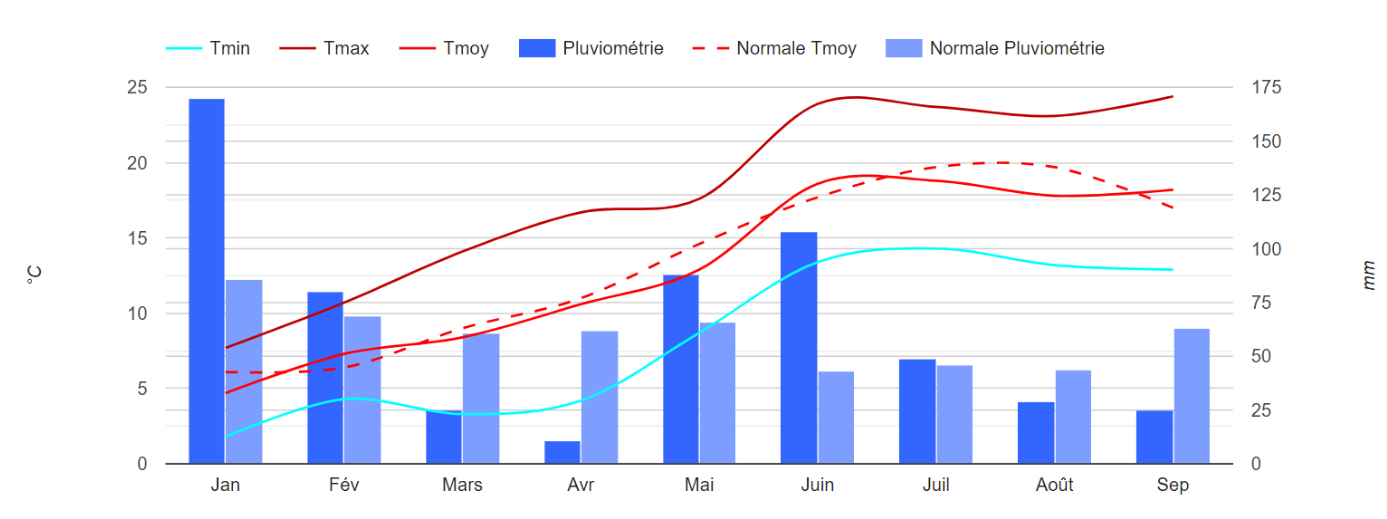

By François Lieubeau
The conditions experienced during the 2021 vintage have already been well reported, with spring frost, hail storms, drought and fire, and torrential rain among the disastrous climate events that marked the year in France. As we draw the first conclusions, it is clear that this vintage is one that the Loire Valley and the Muscadet wine region will not easily forget. But ultimately, as always, how well a wine estate fared came down to the producer and their instinct and experience, their responsiveness and ability to adapt, their commitment day-in-day-out in the vineyard and the winery, and their level of standards and investments.
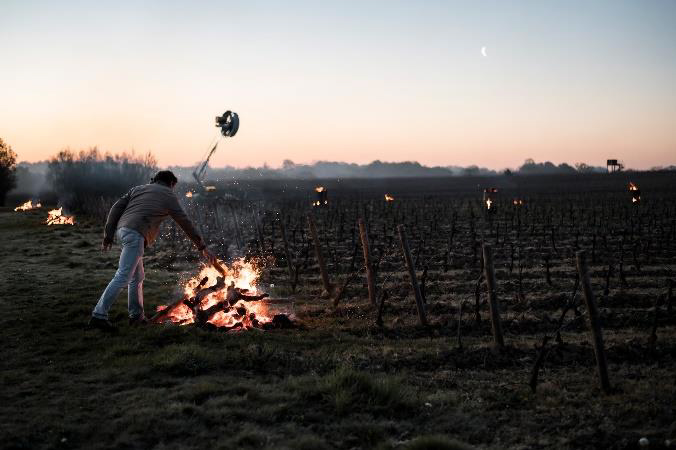
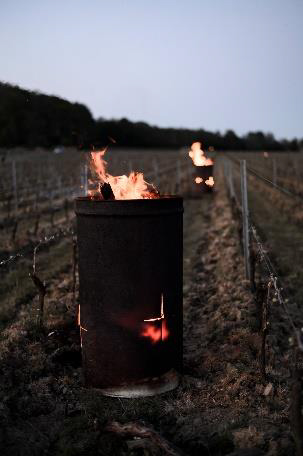
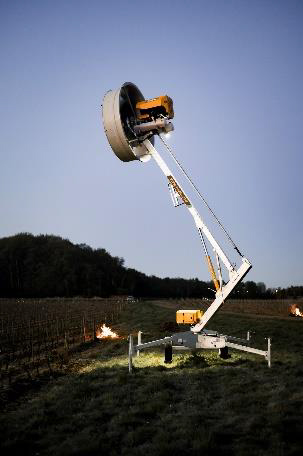
After a relatively cold and wet winter, during which good reserves of water were built up, the first buds appeared around March 30th, marking a return to a more normal date after several years of very early budding. The vineyard suffered eight nights of frost between 7 and 16 April, with extremely low temperatures and clear damp nights, stirring up memories of the devastating frost that struck the Nantes vineyards in 1991. Night after night, waves of below-zero temperatures exacerbated the severity of the frost. The worst night occurred on Monday 12 April, with a temperature of minus 3.5°C, following 10 millimeters of rainfall in the night of Saturday to Sunday. It was all hands on deck for the Famille Lieubeau team who, during these eight nights, took turns lighting and keeping the fires burning around our wind towers. With the experience of the last five years, people’s incredible support, and a fierce struggle, we managed to save most of the buds in our Aulnaye vineyard at the confluence of the Sevre and Maine rivers. Unfortunately, the other plots, including Bel Abord, La Placeliere, and La Fruitiere were not as lucky and their yields were decimated by the frost. After this extremely trying period, it is clear to us that we must continue investing in enhancing and diversifying our protection systems. In early 2022, we will be installing a new wind tower in La Fruitiere and have launched a sprinkler-based frost protection project for the Bel Abord slope.
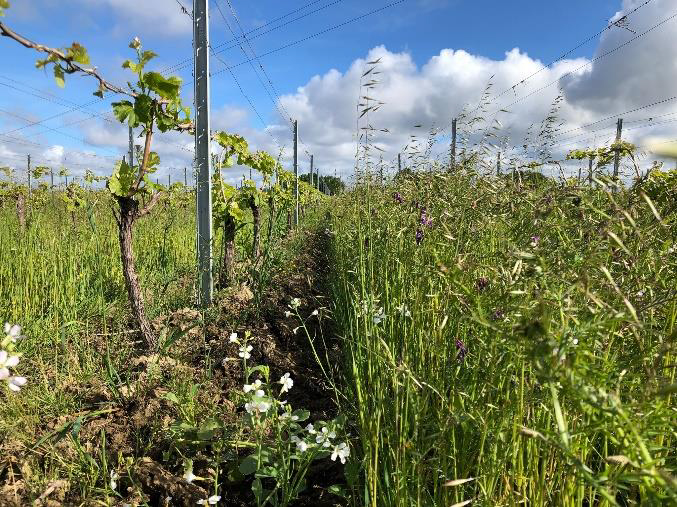
These challenging circumstances have not prevented us from continuing to improve and raising the bar ever higher in terms of quality. In addition to our certification for organic wine growing, cover planting and animal traction are two examples of how we are improving in the vineyard. The cover crops sown between the vineyard rows just after the last harvest now have many positive effects throughout the year. They reduce erosion thanks to the presence of vegetation all winter. The combination of turnip rape, oats, and vetch form a complementary mix. Turnip rape with its deep taproot and oat with its dense root system improves the soil’s uptake of water and provides it with natural aeration. Vetch, which belongs to the legume family, provides natural fertilization as green manure. It captures nitrogen in the air in its roots which is then available for the vine throughout the growing season. Cover planting also provides a habitat for a wide variety of organisms that enhance vineyard biodiversity. Furthermore, this system provides carbon sequestration which is beneficial for the environment and the climate.
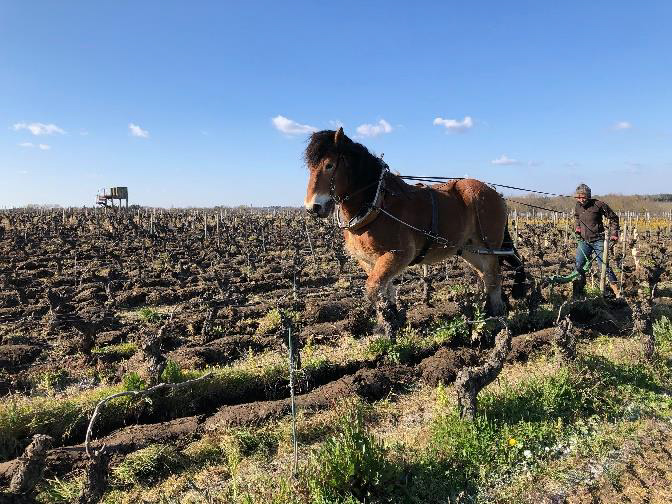
In spring, we reintroduced animal traction on the two hectares of our Cru Chateau-Thebaud vineyard, with the arrival of Camille, and Vainqueur, an I I-year-old Auxois draft horse. This precise and poetic method ensures that the old vines planted in 1945 are treated with the utmost care. Today, 80% of our vineyards are weeded mechanically using horse plowing or by tractor and we continue working to increase this further.
The subsequent part of the growing season didn’t leave us a moment’s rest. May was extremely cold, not helping the vines to restart after the frost. Heavy and frequent rainfall in May, June, and July led to an increased threat of downy mildew, before and after flowering, which came late and with difficulty on around June 12th. Total rainfall for these three months was 245 millimeters, which is almost double the seasonal average. Fortunately, the team’s experience, responsiveness, and exemplary organization, as well as new equipment, enabled us to effectively fight disease and protect the vines, so as to avoid further reducing their potential yields. Today, 45 hectares of our estate are certified for organic wine growing. Here, only natural elements of mineral, plant, or animal origin are used on the vines, in the utmost respect for our terroir. Last year, we also began the conversion to organic for our white varietal wines – Chardonnay, Sauvignon, and Polle Blanche.
Thanks to the extremely careful work carried out in the vineyard all year round – including bud removal, cover planting, trellising, and leaf removal – excess water was well assimilated by the vines and did not cause additional damage. From August 15th until harvest, the weather was at last favorable, which homogenized ripeness, increased concentration, and ensured healthy grapes.
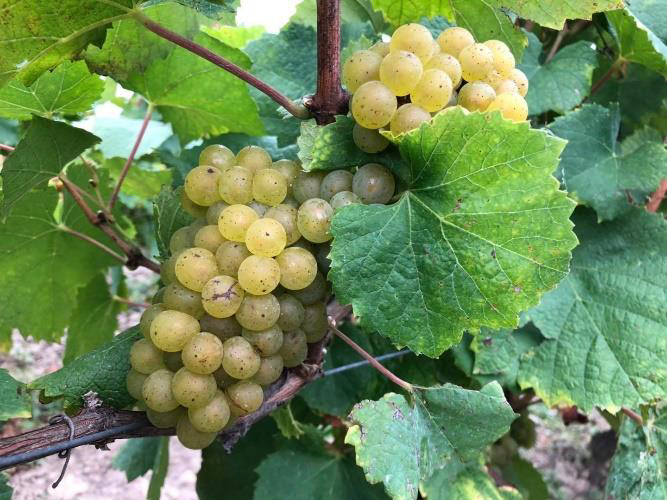
The relatively late harvest finally began on September 16th under brilliant sunshine. We were very happy with the quality of the grapes which showed impeccable health, perfect ripeness – average alcohol was 11.9° – and excellent balance. The average acidity of the must was 5.2 grams per liter which was slightly higher than in previous years. We hand-harvest our Cru and Muscadet old vines, and systematically sort grapes from all vineyards, using some skin contact maceration and natural yeasts in fermentation. These practices which are still quite unusual in our region make a real difference.
In terms of volumes, unsurprisingly, 2021 is the estate’s smallest vintage on record. Yields dropped 60% but were nevertheless a little higher than our initial estimations, and no doubt above the average for the region thanks to the efforts of the last several years (replanting, anti-frost systems, experience of organic winegrowing). Looking on the brighter side, the previous 2020 vintage was also excellent in quality but much more generous in terms of volume and should allow us to continue meeting the growing demand for our wines.
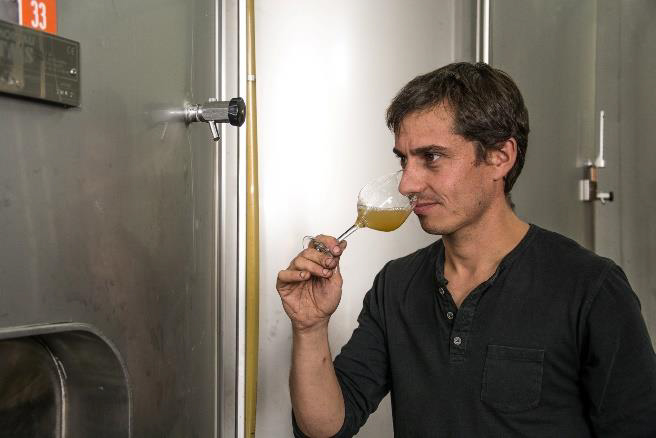
In the winery, fermentation is going well. Once again this year, Vincent strived to further reduce the use of S02 before fermentation, which was aided by perfectly healthy grapes, irreproachable hygiene, and well-managed temperature control. The goal is to offer intense and palatable wines, with total SO2 levels of below 75 milligrams per liter, while conserving freshness, brightness of fruit, and aging potential.
Harvest was completed on October 1st and all the grapes had been brought into the winery just before another record rain event hits Nantes. The last two years have shown us that we must never miss an opportunity to enjoy being together, and all the team was therefore delighted to resume the tradition of our end-of-harvest “Paulee” party. With aging beginning in the winery and the autumn vineyard tasks underway, the new 2022 vintage is already in preparation. We hope that the weather conditions will be kinder this year.
